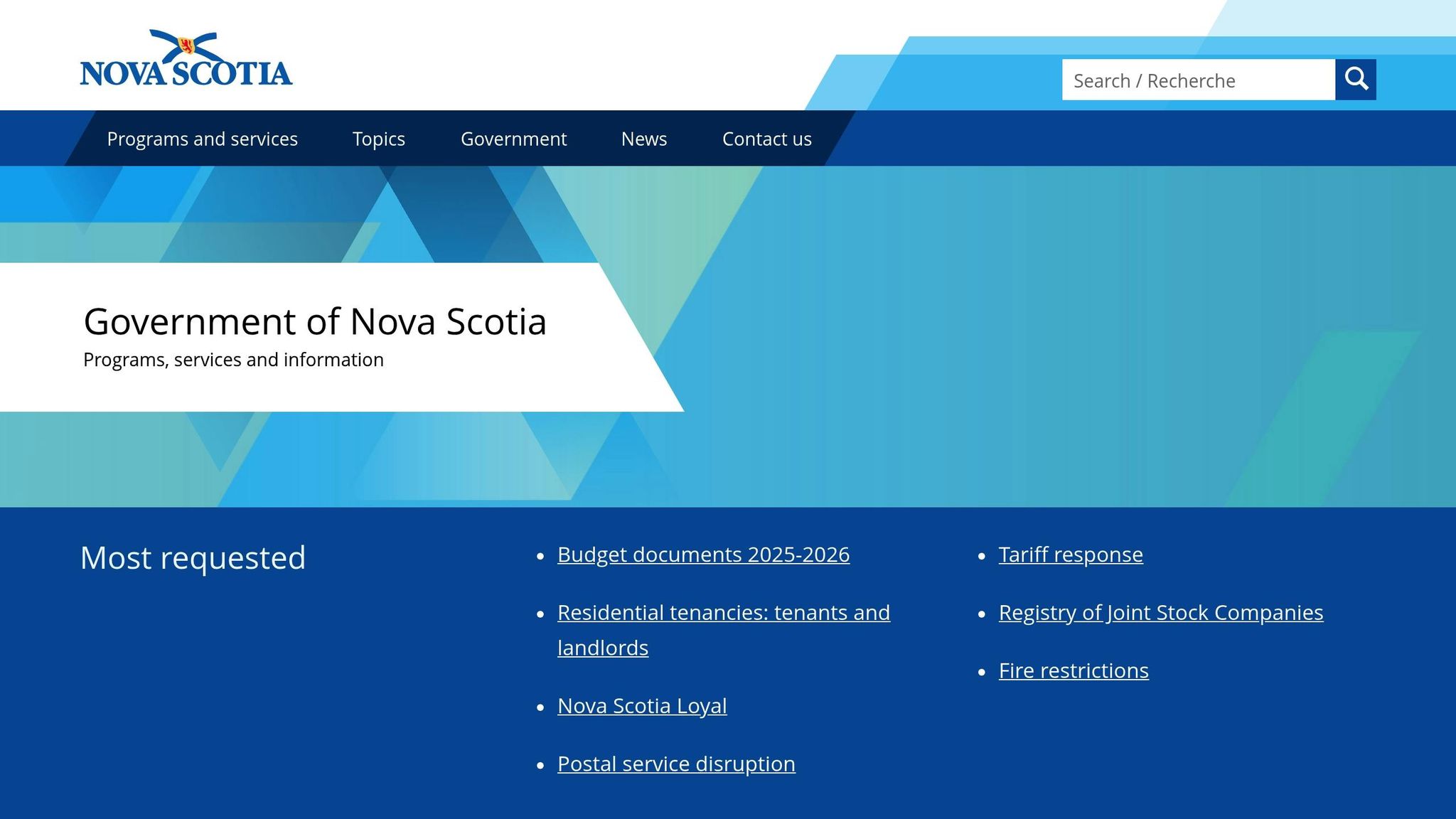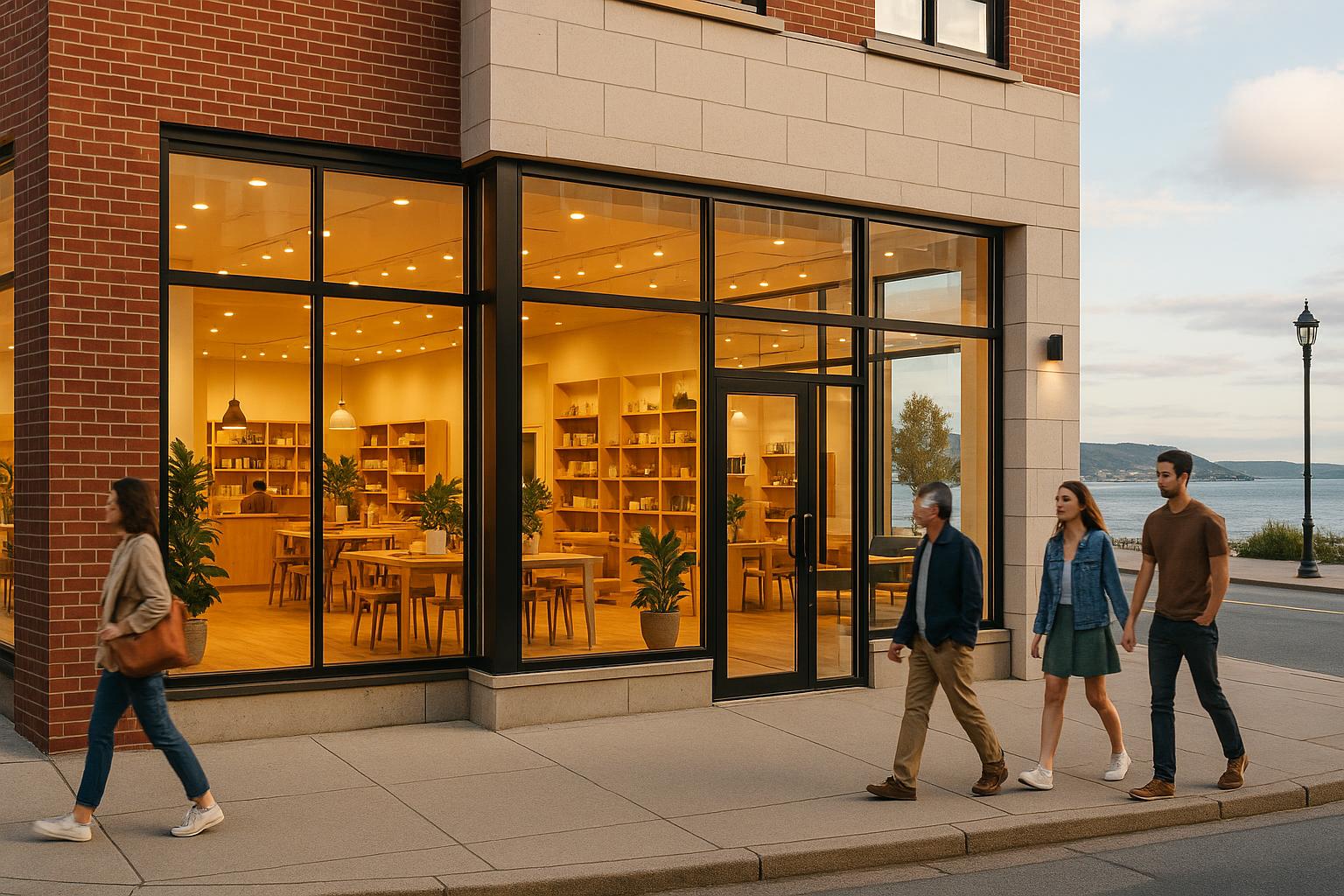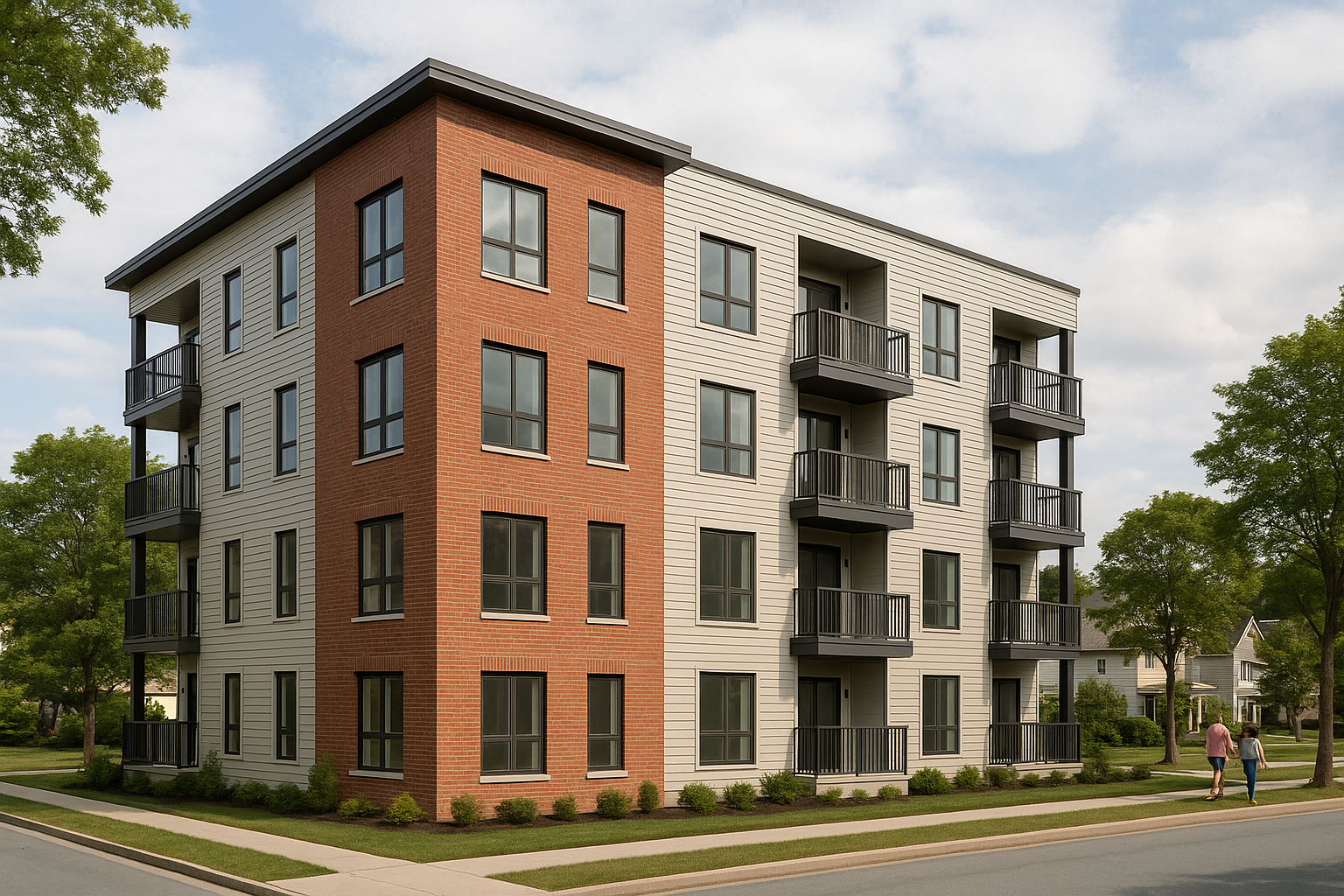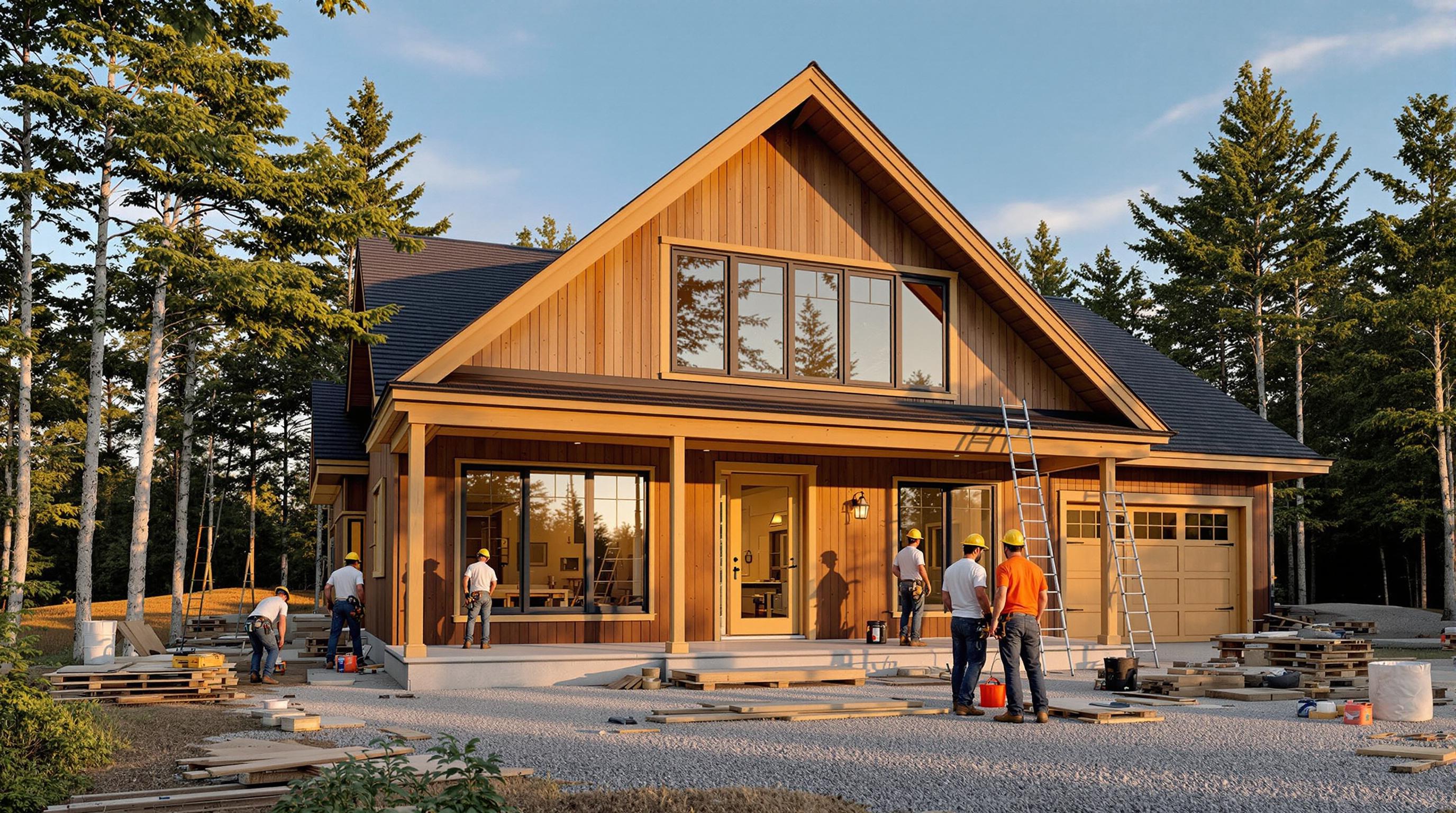Building a multi-unit rental property in Nova Scotia? Meeting the province’s building code is just the starting point. To maximize your investment, you’ll want to go further. Here’s why:
- Code Compliance vs. Long-Term Value: Meeting basic code ensures safety, but exceeding it can lower maintenance costs, attract tenants, and boost ROI.
- Integrated Teams Save Time and Money: Fragmented contractors often cause delays and overruns. A unified design-build team avoids miscommunication and slashes timelines.
- Fixed-Price Contracts for Cost Certainty: Avoid budget surprises with contracts that lock in total costs upfront.
- Enhanced Quality Control: Regular inspections, daily progress tracking, and durable materials ensure better durability and tenant satisfaction.
- Energy Efficiency and Smart Features: Upgrades like ductless heat pumps, triple-pane windows, and smart home tech reduce costs and attract eco-conscious renters.
Provincial Building Codes and Municipal Planning Rules
Nova Scotia Building Code Requirements for Multi-Unit Properties

Nova Scotia’s building code outlines the minimum safety and construction standards for multi-unit residential buildings. While these standards establish a baseline for areas like structural integrity, fire safety, energy efficiency, and accessibility, simply meeting them doesn’t guarantee long-term performance or tenant satisfaction. Instead, these codes act as a starting point for additional quality measures.
For buildings with four or more units, the code mandates key safety and functional features. These include proper fire separation between units, clearly marked egress routes, and adequate ventilation systems. Energy performance requirements typically involve specific insulation levels and air barrier systems to reduce heat loss. Additionally, electrical and plumbing systems must be designed to handle the increased demands of multi-unit living.
The real challenge lies in how these requirements are applied. Traditional construction methods often treat compliance as a checklist, aiming to meet the bare minimum. While this approach may pass inspections, it can lead to higher utility bills, more frequent maintenance, and lower tenant satisfaction in the long run.
Recent Building Code Changes
Recent updates to Nova Scotia’s building code reflect a shift towards better performance and inclusivity. These revisions include stricter energy efficiency standards, such as the use of better-quality windows, improved insulation, and more efficient heating systems. Accessibility has also been prioritized, with new standards promoting barrier-free access and inclusive design elements. Enhanced ventilation requirements now mandate mechanical systems that maintain consistent air quality throughout buildings. Fire safety measures have also been strengthened, including improvements in fire separation and the addition of interconnected smoke alarms to ensure timely alerts across all units.
Meeting Code vs. Exceeding Standards
Building beyond the minimum code requirements can offer significant advantages, both for property owners and tenants. Structures that only meet the basic standards often face higher utility costs, operational inefficiencies, and reduced tenant appeal. On the other hand, exceeding these standards can enhance tenant comfort and provide better long-term returns on investment.
Upgrading to higher-grade insulation, energy-efficient windows, advanced mechanical systems, and optimized electrical setups creates a more comfortable and cost-effective living environment. These improvements not only attract and retain tenants but can also justify higher rental rates. Over time, the initial investment in superior materials and systems often leads to lower maintenance costs and increased property value. To ensure these benefits are fully realized, consistent quality control during construction is essential - not just on paper, but in practice.
Setting Up Quality Control Systems
Ensuring quality in construction starts with setting up solid quality control systems. These systems are designed to do more than just meet compliance - they aim to address potential issues early and enhance overall project performance. By focusing on structured processes and team collaboration, you can avoid costly mistakes and delays.
The key difference between hoping for quality and actually achieving it lies in how you organize your team, establish verification protocols, and oversee the project from the very beginning. A well-structured foundation often leads to smoother workflows and better results, especially when integrated teams are part of the equation.
Integrated Design-Build Teams
In traditional construction, projects are often divided among separate entities: architects, engineers, general contractors, and subcontractors. This fragmented setup can lead to communication gaps, which often result in errors, delays, and finger-pointing when things go wrong.
An integrated design-build approach solves this problem by bringing all professionals - architects, engineers, and construction crews - together as one team. From the initial planning stages to the final inspection, everyone collaborates under the same roof. This daily interaction helps identify and resolve potential issues during the design phase, rather than discovering them halfway through construction.
This approach doesn’t just save time - it also eliminates the $47,000 average coordination waste that property owners often face when juggling multiple contracts. With a single point of accountability, miscommunication is minimized. For example, when an electrical engineer and a framing supervisor work side by side, conflicts can be addressed immediately, preventing costly delays or rework.
Beyond cost efficiency, integrated teams can improve construction sequences, reduce material waste, and implement higher-quality solutions that fragmented contractors might overlook.
P.Eng Inspections and Third-Party Verification
Professional Engineer (P.Eng) inspections add an extra layer of assurance to your project by providing independent verification. Unlike municipal inspections, which focus on meeting basic code requirements, P.Eng inspections go deeper, evaluating structural integrity, system performance, and durability at critical stages.
Typically, third-party inspections are conducted at five key milestones:
- Foundation completion
- Framing and structural components
- Mechanical and electrical rough-ins
- Insulation and air barrier installation
- Final systems commissioning
These inspections ensure that each phase meets engineering specifications before moving forward. For instance, a P.Eng inspection might catch improper foundation waterproofing that could lead to moisture problems down the road or flag structural connections that meet code but fall short of long-term durability standards.
The benefits extend beyond quality assurance. Inspection reports are valuable for insurance, financing, and even future property sales. Banks and insurance providers often view P.Eng-verified projects as lower risk, which can lead to better financing terms and coverage options.
It’s also essential for property owners to maintain the right to select their final inspector. This ensures true independence, rather than relying solely on inspections arranged by the construction company.
Daily Progress Documentation
In addition to expert inspections, daily documentation plays a crucial role in maintaining quality throughout the project.
Real-time project tracking keeps everyone, especially property owners, informed about progress and ensures accountability. Daily photo documentation captures completed work, installed materials, and any issues that arise along the way. This level of transparency provides evidence of quality and helps resolve disputes more quickly.
Modern project management tools make it easy for property owners to stay updated. You can review daily photos, track milestone completions, and monitor schedule adjustments from anywhere. This eliminates the uncertainty that often comes with traditional construction projects, where weeks can pass without clear updates.
These records also simplify future repairs or renovations. Having photographic evidence of electrical wiring, plumbing layouts, and structural details makes maintenance or upgrades more efficient and cost-effective.
Daily oversight also encourages higher standards. When construction crews know their work is being photographed and reviewed regularly, they are more likely to maintain quality. This simple yet effective measure often prevents problems before they even happen.
sbb-itb-16b8a48
Common Construction Problems and How to Avoid Them
Multi-unit construction projects often encounter challenges that drive up costs, delay timelines, and compromise quality. By recognizing these issues and implementing effective strategies, property owners can sidestep the costly errors often associated with traditional construction methods. Below, we explore practical solutions to address some of the most common pitfalls.
Budget Overruns and Fixed-Price Contracts
Managing costs effectively starts with choosing the right type of contract. Cost-plus contracts, while seemingly transparent, can lead to unpredictable expenses. Under this arrangement, property owners cover the costs of materials, labour, and contractor markups as they arise. However, this structure provides little motivation for contractors to control spending or work efficiently, often resulting in budget overruns of 30–60%. For instance, a fourplex project originally estimated at $640,000 could easily exceed $900,000 due to unchecked expenses, change orders, and delays.
Fixed-price contracts, on the other hand, offer a more predictable alternative. These contracts lock in the total construction cost before work begins, ensuring property owners know exactly what they’ll pay. For example, standard construction might cost $160,000 per unit, while CMHC MLI Select projects could cost $200,000 per unit - regardless of material price changes or unexpected challenges.
| Contract Type | Owner Risk | Contractor Accountability | Budget Predictability |
|---|---|---|---|
| Cost-Plus | High – Owner absorbs overruns | Low – Minimal accountability | Poor – Final costs uncertain |
| Fixed-Price | Low – Costs set upfront | High – Contractor bears overruns | Excellent – Costs predetermined |
The main difference lies in how risk is distributed. Fixed-price contracts encourage contractors to plan carefully and work efficiently, which benefits property owners through better cost control and faster project completion. Additionally, lenders often prefer fixed-price contracts, as they provide greater certainty about total project costs.
Poor Team Coordination
Traditional construction often relies on a fragmented team structure, with architects, engineers, contractors, and subcontractors working independently under separate contracts. This lack of integration can lead to miscommunication and costly errors. For example, if an architect designs an electrical layout without consulting the framing contractor, it may require expensive rework. Similarly, mismatched mechanical and structural plans can result in delays and additional expenses.
Integrated design-build teams address these issues by bringing all professionals under a single contract and point of accountability. This approach improves coordination, reduces material waste, and ensures faster problem-solving. In fact, integrated teams can often cut construction timelines from the typical 12–18 months to just 6 months, thanks to streamlined collaboration and better alignment of priorities.
Inconsistent Quality Inspections
Random inspections often fail to catch critical issues, leading to expensive rework. Municipal inspections usually focus on meeting basic code requirements, which may not address long-term durability or performance. For example, improper waterproofing might go unnoticed until after interior finishes are complete, requiring costly demolition to fix the problem.
A structured quality control system can prevent these issues by incorporating inspections at every stage of construction. This includes setting clear acceptance criteria, creating detailed inspection plans, and using checklists to verify progress. For multi-unit projects, a multi-stage inspection process ensures thorough oversight:
- Pre-production inspections: Evaluate materials and components before installation, especially for new suppliers or critical systems.
- During-production inspections: Conduct checks when work is 10–15% complete to catch deviations early and minimize rework.
- Pre-completion inspections: Confirm that finished work meets specifications before final approval, ensuring the project is ready for occupancy.
Additionally, effective quality control systems include processes for identifying and resolving deficiencies. By addressing issues systematically, property owners can ensure long-term durability and value, going beyond the minimum requirements of building codes [1][2][3].
Building Beyond Code for Better Returns
In Nova Scotia, meeting the building code ensures a property meets basic safety and functionality standards. But for property owners looking to maximize their investment, going above and beyond these requirements can yield substantial benefits. By upgrading beyond the minimum standards, you can increase rental income, lower operating expenses, and attract tenants who are more likely to stay long-term. Here's how exceeding code can directly boost your return on investment (ROI).
Energy Efficiency Upgrades
Investing in energy-efficient systems can significantly cut utility costs while appealing to eco-conscious tenants. Smart systems - like thermostats, lighting, and HVAC sensors - are a prime example. A 2024 Parks Associates study revealed that multifamily property owners using integrated smart systems for HVAC, lighting, and water management achieved combined energy and water savings of 18–19% [6]. Across larger portfolios, high-efficiency systems could translate to annual savings of 15–30% [6].
Ductless heat pumps are another standout. They allow tenants to control temperatures in their own units, reducing energy waste while improving comfort. Pairing these with triple-pane windows enhances energy efficiency further by minimizing heat loss and providing better sound insulation.
Energy Star appliances, while requiring a larger initial investment, often pay off in the long run. They lower utility bills and appeal to tenants looking for sustainable living options. For landlords who include utilities in rent, these savings are a direct benefit. If tenants pay for utilities, energy-efficient features can make your property stand out in a competitive rental market.
Tenant-Focused Features
Smart home technology is no longer a luxury - it's becoming a key factor for many renters, especially younger ones. Over 65% of renters under 40 actively look for smart home features when choosing a rental, with many willing to pay at least $20 more per month for properties equipped with this technology [6]. Among Gen Z renters, 62% consider smart-home features "extremely" important [6].
Features like smart locks and keyless entry systems not only enhance tenant convenience but also simplify property management. They eliminate the hassle of physical keys, reduce lockout calls, and allow for remote access during maintenance. Similarly, doorbell cameras add an extra layer of security and let property owners monitor their properties remotely. Properties with smart home amenities often see higher tenant retention rates, with lease renewals averaging 18% higher compared to units without these features [5].
Durable Materials for Long-Term Value
Choosing durable, high-quality materials is another way to protect your investment and reduce long-term costs. For instance, engineered hardwood flooring and quartz countertops are more resilient than laminate options. These materials not only maintain their appearance longer but also require less frequent replacement, saving money over time.
Investing in commercial-grade fixtures and hardware can also minimize maintenance expenses. These are built to handle heavy use, reducing the likelihood of breakdowns and tenant complaints compared to cheaper alternatives.
Proper waterproofing and attention to building envelope details are crucial for preventing moisture-related problems, which can lead to costly structural repairs. While building codes set the baseline, using superior materials and installation practices can provide better long-term protection for your property.
Additionally, custom millwork and built-in storage solutions can elevate the look and functionality of your units. Tenants appreciate the added sophistication and organization these features provide, often justifying higher rents. Plus, these thoughtful touches can reduce wear and tear, as tenants are less likely to cause damage to well-designed spaces.
Balancing upfront costs with long-term benefits is key. Smart home technology has been shown to improve lease renewal rates [4], while durable materials and quality construction help lower maintenance expenses and extend the time between major renovations. These upgrades not only enhance tenant satisfaction but also ensure your property remains a strong investment for years to come.
Conclusion: Your Quality Control Action Plan
Systematic quality control can turn the often-disjointed construction process into a secure and profitable investment. If you're building a multi-unit rental property in Nova Scotia, this approach isn’t optional - it’s essential from the very beginning.
Start with integrated accountability. The traditional method of juggling contractors, architects, and engineers often leads to miscommunication and blame-shifting. Opting for a design-build team eliminates these issues. When one company oversees design, engineering, and construction, accountability becomes a built-in feature of the process. This seamless coordination also supports securing financial guarantees.
Insist on financial guarantees, not vague agreements. Cost-plus contracts and undefined timelines can quickly spiral into unexpected expenses and project delays. Instead, fixed-price contracts with guaranteed timelines provide peace of mind. They help you avoid costly overruns and ensure timely rent collection, safeguarding your investment.
Use triple-layer quality verification. Regular inspections during construction, combined with independent verification, ensure your property meets high standards. This process maintains accountability and helps deliver a final product that stands up to scrutiny.
Focus on long-term value, not short-term savings. Features like ductless heat pumps and triple-pane windows reduce operating costs and attract reliable tenants. Smart home technology adds appeal, while durable materials like engineered hardwood and quartz countertops lower maintenance expenses and preserve long-term value.
The construction industry's reputation for delays and overruns doesn’t have to define your project. By demanding systematic quality control, fixed pricing, and guaranteed timelines, property owners can achieve annual returns of 12–20% on their rental properties. The key is partnering with construction teams willing to back their promises with their reputation - and their money.
Quality construction goes beyond meeting basic building codes. It’s about creating enduring value for Nova Scotia property owners through deliberate planning, accountability, and precision.
FAQs
What are the advantages of using an integrated design-build team instead of traditional construction methods?
Choosing a design-build team comes with several advantages compared to traditional construction methods. By having one team manage both the design and construction phases, projects tend to move along faster, with fewer delays and unexpected expenses. This setup streamlines communication and creates a single point of accountability, cutting down on the chances of miscommunication between separate contractors and designers.
Another benefit is the collaborative approach that design-build offers. From the very beginning, the team works together to address potential challenges, leading to improved quality control, tighter schedules, and cost efficiencies. For property owners in Nova Scotia, this integrated method helps deliver better outcomes while avoiding the usual headaches associated with more fragmented construction processes.
Why are fixed-price contracts better for managing costs in multi-unit construction projects?
Fixed-price contracts are a solid choice for keeping costs in check. They outline a set total cost for the project upfront, giving property owners a clear understanding of their financial commitment. This approach minimizes the chance of unexpected expenses or going over budget.
On the other hand, cost-plus contracts work differently. They cover the contractor's actual expenses plus an additional fee, which can make costs harder to predict. For property owners aiming to stick to a budget and avoid financial surprises, fixed-price contracts offer a straightforward and dependable option.
Why should you go beyond the minimum building code standards when constructing rental properties in Nova Scotia?
When constructing rental properties in Nova Scotia, sticking to the bare minimum building code standards might seem like the easiest route, but aiming higher pays off in the long run. Opting for better-quality construction ensures your property stands the test of time, requires less upkeep, and stays appealing to tenants.
By going beyond the basics, you’re not just building a structure - you’re creating a safer, more comfortable living space. Happier tenants mean fewer vacancies and longer leases, which is always good news for landlords. Plus, properties built with higher standards tend to attract better market value, making them a solid investment that pays dividends over time.



